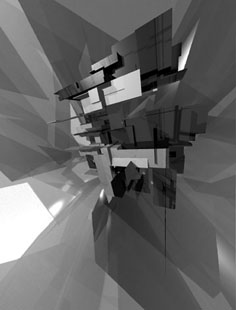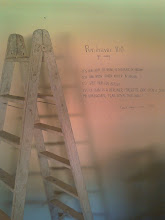
Lo supieron los arduos alumnos de Pitágoras:
los astros y los hombres vuelven cíclicamente;
los átomos fatales repetirán la urgente
Afrodita de oro, los tebanos, las ágoras.
En edades futuras oprimirá el centauro
con el casco solípedo el pecho del lapita;
cuando Roma sea polvo, gemirá en la infinita
noche de su palacio fétido el minotauro.
Volverá toda noche de insomnio: minuciosa.
La mano que esto escribe renacerá del mismo
vientre. Férreos ejércitos construirán el abismo.
(David Hume de Edimburgo dijo la misma cosa).
No sé si volveremos en un ciclo segundo
como vuelven las cifras de una fracción periódica;
pero sé que una oscura rotación pitagórica
noche a noche me deja en un lugar del mundo
que es de los arrabales. Una esquina remota
que puede ser del Norte, del Sur o del Oeste,
pero que tiene siempre una tapia celeste,
una higuera sombría y una vereda rota.
Ahí está Buenos Aires. El tiempo que a los hombres
trae el amor o el oro, a mí apenas me deja
esta rosa apagada, esta vana madeja
de calles que repiten los pretéritos nombres
de mi sangre: Laprida, Cabrera, Soler, Suárez...
Nombres en que retumban (ya secretas) las dianas,
las repúblicas, los caballos y las mañanas,
las felices victorias, las muertes militares.
Las plazas agravadas por la noche sin dueño
son los patios profundos de un árido palacio
y las calles unánimes que engendran el espacio
son corredores de vago miedo y de sueño.
Vuelve la noche cóncava que descifró Anaxágoras;
vuelve a mi carne humana la eternidad constante
y el recuerdo ¿el proyecto? de un poema incesante:
«Lo supieron los arduos alumnos de Pitágoras...»
Joan Hernández Pijuán murió ayer a los 74 años de edad.
Hernández Pijuan, fue un creador de imágenes elementales con referencias a la naturaleza. En sus paisajes,Pijuán sintetiza el alma de estos espacios cultivados por el hombre a través de pequeños detalles que hablan de un árbol o un camino que sobresale sobre la planicie de un campo labrado.
La actividad artística de Pijuán evolucionó desde el expresionismo hacia una figuración geométrica. En 1959, formó el grupo Sílex con Carles Planell, Eduardo Alcoy, José María Rovira Brull y Lluís Terricabras. En 1981 fue nombrado catedrático de la Facultad de Bellas Artes de la Universidad de Barcelona, siendo decano de dicha facultad de 1992 a 1997. Ingresó en la Academia de San Fernando en 2000.



